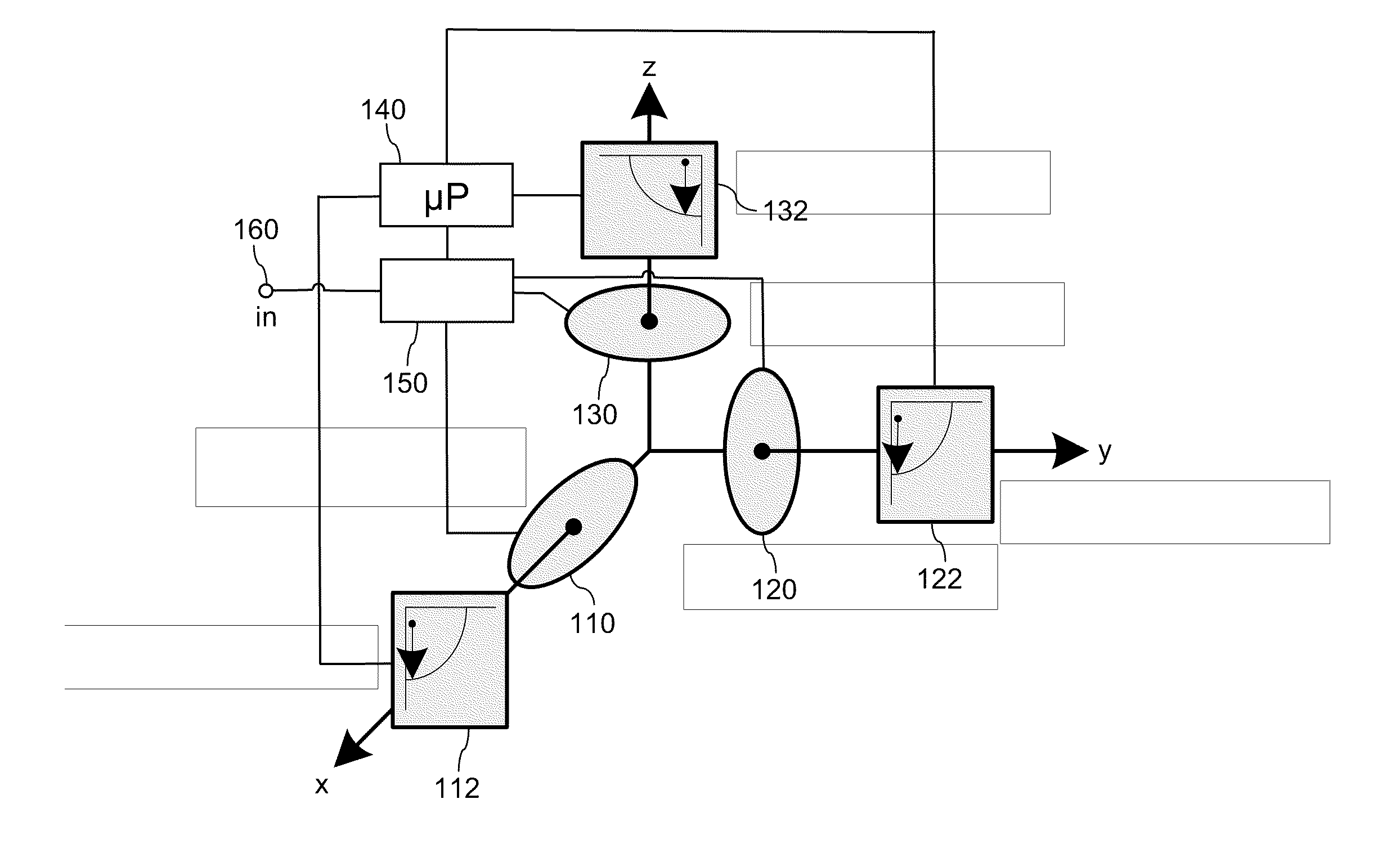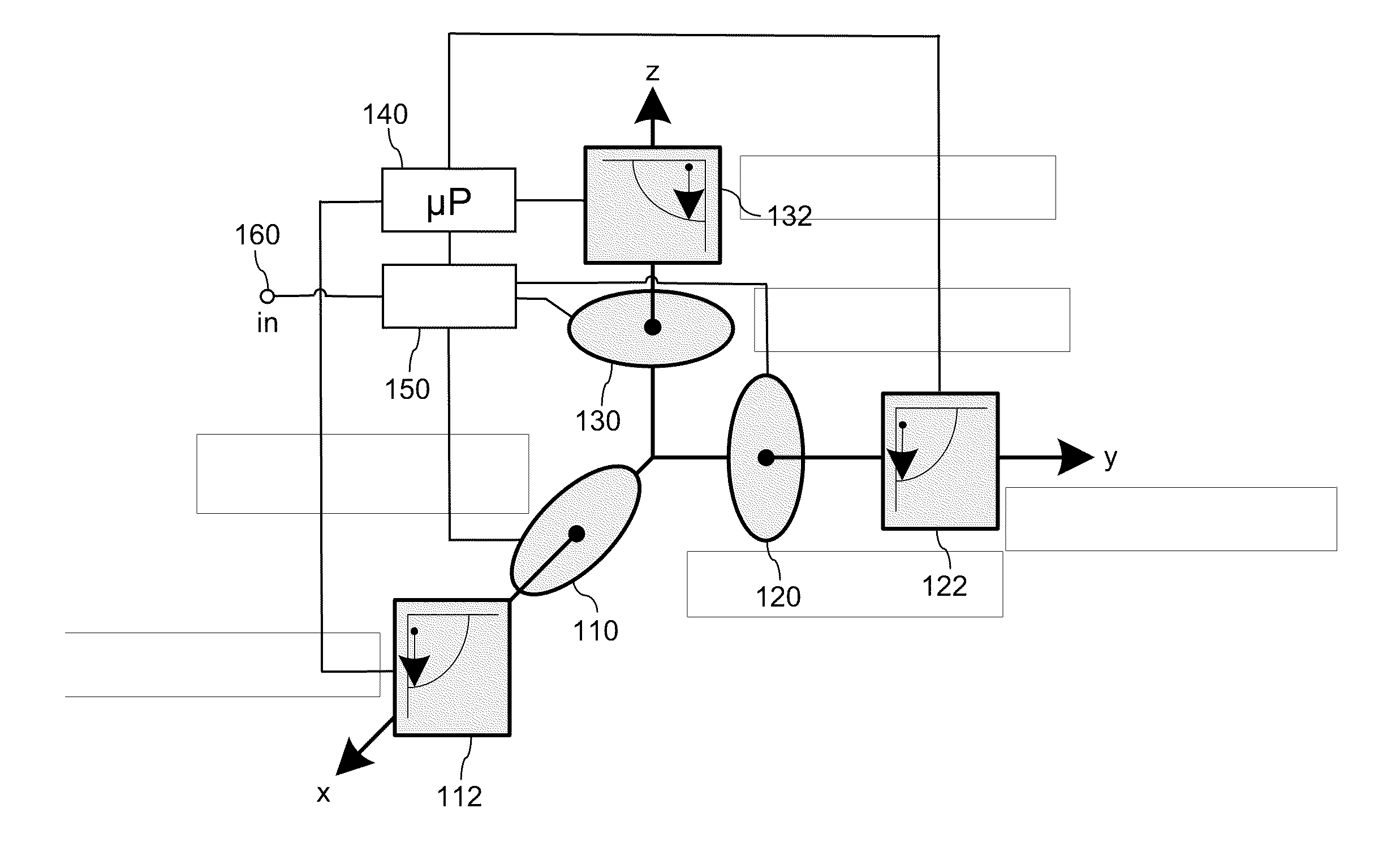Adaptation of a directional characteristic of a radio signal based on the spatial orientation of a radio transmitter
a radio transmitter and spatial orientation technology, applied in the field of radio communication, can solve the problems of increasing the probability, not being able to handle a plurality of wired cable connections, and not having a sufficiently large coupling coefficient of the coil
- Summary
- Abstract
- Description
- Claims
- Application Information
AI Technical Summary
Benefits of technology
Problems solved by technology
Method used
Image
Examples
Embodiment Construction
[0048]The illustration in the drawing is schematically.
[0049]FIG. 1 shows a transmitter 100, which comprises three transmit coils. A first transmit coil 110 is aligned with an x-axis, a second transmit coil 120 is aligned with an y-axis and a third transmit coil 130 is aligned with an z-axis. Each of the transmit coils 110, 120, 130 can be activated for transmitting a radio signal from the transmitter 100 to a non depicted receiver.
[0050]The transmitter 100 further comprises three inclinometers. A first inclinometer 112 is assigned to the first coil 110 and is adapted for measuring the rotational angle of the transmitter 100 with respect to the x-axis. A second inclinometer 122 is assigned to the second coil 120 and is adapted for measuring the rotational angle of the transmitter 100 with respect to the y-axis. A third inclinometer 132 is assigned to the first coil 130 and is adapted for measuring the rotational angle of the transmitter 100 with respect to the z-axis.
[0051]The trans...
PUM
 Login to View More
Login to View More Abstract
Description
Claims
Application Information
 Login to View More
Login to View More - R&D
- Intellectual Property
- Life Sciences
- Materials
- Tech Scout
- Unparalleled Data Quality
- Higher Quality Content
- 60% Fewer Hallucinations
Browse by: Latest US Patents, China's latest patents, Technical Efficacy Thesaurus, Application Domain, Technology Topic, Popular Technical Reports.
© 2025 PatSnap. All rights reserved.Legal|Privacy policy|Modern Slavery Act Transparency Statement|Sitemap|About US| Contact US: help@patsnap.com


